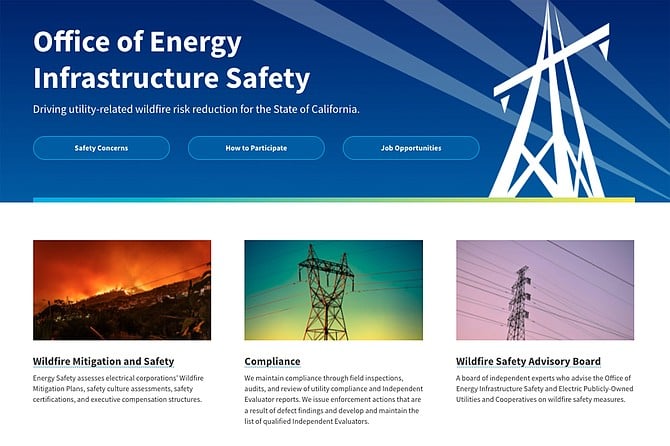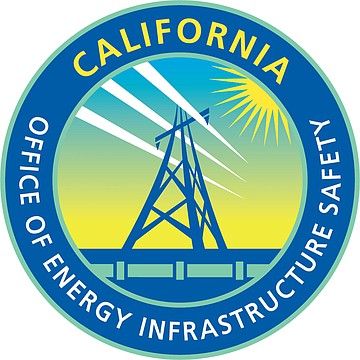 Facebook
Facebook
 X
X
 Instagram
Instagram
 TikTok
TikTok
 Youtube
Youtube

The first annual Safety Culture Assessment of San Diego Gas & Electric by the state’s Office of Energy Infrastructure Safety is out, giving the local utility generally high marks, with a significant exception being dangerous armed run-ins with the public. Responding to questions about top job risks, SDG&E workers interviewed by state surveyors “mentioned approximately eight different hazards, including ‘lifting/strain, slips, trips, falls, working aloft, falling object.’” Other employment perils included electricity, sharp objects (“There’s blades everywhere”), wildfires (“If you’re on a one-way road and a fire occurs, make sure you’re pointed in the right direction”), “animals on the site (snakes, dogs),” as well as poison oak.

“Frontline workers who were interviewed indicated their second most-cited exposure (driving ranked first, tied with the hazardous nature of the work) was interactions with certain discontented members of the public. One participant reported: ‘I’ve been in this industry 37 years. If someone gets in your face, pulls a weapon on you – that happened to me in the field – you just take it. You aren’t protected the way you are in an office job. We could do better to protect field personnel. Someone assaulted me, and I had to go to anger management.’” Regarding needed improvements, the survey says, “although the risk posed by hostile interactions with members of the public is currently discussed at tailgate meetings, the subject deserves increased focus and visibility,” including “a plan to anticipate, mitigate, and control this risk.”
Adds the document, “To this end, SDG&E should track the trends in hostile interactions with the public to guide future response strategies and develop (if not already developed) and train frontline workers on a protocol to de-escalate and disengage from unsafe interactions with the public.” Among the report’s positive findings: “91 percent of survey respondents ‘strongly’ or ‘somewhat’ agreed with the statement, ‘Protecting the community from wildfire hazards is a high priority with management.’” In an accompanying letter to SDG&E dated September 2, Lucy Morgans of the Energy Infrastructure Safety office says, “SDG&E can satisfy the ‘good standing’ requirement” of state law “by agreeing to implement all of the findings (including recommendations for improvement) of its most recent” Safety Culture Assessment.
San Diego’s love-hate relationship with electric scooter providers continues with the city’s November 10 call for requests for proposals regarding what it calls Shared Mobility Devices, with an emphasis on making them handicapped-friendly. “The City of San Diego is requesting proposals to select up to four qualified operators for a three-year Shared Mobility Device Program with optional two one-year extensions,” says the document. “It will be a priority of the City to select operators in such a way to provide the City a multitude of mobility options including: stand-up electric scooters, electric or non-electric bikes, cargo or business-supportive electric bikes, and devices geared towards those with disabilities.”
Among a bevy of forms and reports to be required of the putative service providers is a description of “how your company will reach out to underserved communities as identified by the City’s Climate Equity Index to coordinate education, programs, and deployment, that would allow for access to a mixed fleet of devices. Please include quantifiable targets for deployment in mapped communities of concern that will be complied with throughout the term of the contract.”

The city wants to hear about possible subsidies for impoverished users, including “any rate-based incentives or alternative ways in which persons may reserve and pay for a shared mobility device that are proposed for... underserved and low-income residents and their communities.” Whether the city gets those concessions remains to be seen. An October 24 lobbying disclosure filing shows that scooter provider Lyft paid influence peddler Kimberly Miller $12,000 in the third quarter of this year to “ensure streamlined permitting process and regulatory framework for micromobility.” Three weeks ago, city attorney Mara Elliott sued Lyft and other operators to force them to pick up the costs of lawsuits brought against the city by disability-rights partisans who say the devices are blocking handicapped access...Rape was down, but fondling up in 2020, according to San Diego State University’s 2021 Cleary Act annual report of campus crime. Three rapes were reported, compared to seven the year before, while fondling cases jumped from two to five. Robberies remained steady at three, and burglaries rose from 23 to 25. There were two stalking cases, as opposed to zero in 2019. Drug law arrests burgeoned from 33 to 60, with weapons law arrests growing from 5 to 9.
— Matt Potter (@sdmattpotter)
The Reader offers $25 for news tips published in this column. Call our voice mail at 619-235-3000, ext. 440, or sandiegoreader.com/staff/matt-potter/contact/.


The first annual Safety Culture Assessment of San Diego Gas & Electric by the state’s Office of Energy Infrastructure Safety is out, giving the local utility generally high marks, with a significant exception being dangerous armed run-ins with the public. Responding to questions about top job risks, SDG&E workers interviewed by state surveyors “mentioned approximately eight different hazards, including ‘lifting/strain, slips, trips, falls, working aloft, falling object.’” Other employment perils included electricity, sharp objects (“There’s blades everywhere”), wildfires (“If you’re on a one-way road and a fire occurs, make sure you’re pointed in the right direction”), “animals on the site (snakes, dogs),” as well as poison oak.

“Frontline workers who were interviewed indicated their second most-cited exposure (driving ranked first, tied with the hazardous nature of the work) was interactions with certain discontented members of the public. One participant reported: ‘I’ve been in this industry 37 years. If someone gets in your face, pulls a weapon on you – that happened to me in the field – you just take it. You aren’t protected the way you are in an office job. We could do better to protect field personnel. Someone assaulted me, and I had to go to anger management.’” Regarding needed improvements, the survey says, “although the risk posed by hostile interactions with members of the public is currently discussed at tailgate meetings, the subject deserves increased focus and visibility,” including “a plan to anticipate, mitigate, and control this risk.”
Adds the document, “To this end, SDG&E should track the trends in hostile interactions with the public to guide future response strategies and develop (if not already developed) and train frontline workers on a protocol to de-escalate and disengage from unsafe interactions with the public.” Among the report’s positive findings: “91 percent of survey respondents ‘strongly’ or ‘somewhat’ agreed with the statement, ‘Protecting the community from wildfire hazards is a high priority with management.’” In an accompanying letter to SDG&E dated September 2, Lucy Morgans of the Energy Infrastructure Safety office says, “SDG&E can satisfy the ‘good standing’ requirement” of state law “by agreeing to implement all of the findings (including recommendations for improvement) of its most recent” Safety Culture Assessment.
San Diego’s love-hate relationship with electric scooter providers continues with the city’s November 10 call for requests for proposals regarding what it calls Shared Mobility Devices, with an emphasis on making them handicapped-friendly. “The City of San Diego is requesting proposals to select up to four qualified operators for a three-year Shared Mobility Device Program with optional two one-year extensions,” says the document. “It will be a priority of the City to select operators in such a way to provide the City a multitude of mobility options including: stand-up electric scooters, electric or non-electric bikes, cargo or business-supportive electric bikes, and devices geared towards those with disabilities.”
Among a bevy of forms and reports to be required of the putative service providers is a description of “how your company will reach out to underserved communities as identified by the City’s Climate Equity Index to coordinate education, programs, and deployment, that would allow for access to a mixed fleet of devices. Please include quantifiable targets for deployment in mapped communities of concern that will be complied with throughout the term of the contract.”

The city wants to hear about possible subsidies for impoverished users, including “any rate-based incentives or alternative ways in which persons may reserve and pay for a shared mobility device that are proposed for... underserved and low-income residents and their communities.” Whether the city gets those concessions remains to be seen. An October 24 lobbying disclosure filing shows that scooter provider Lyft paid influence peddler Kimberly Miller $12,000 in the third quarter of this year to “ensure streamlined permitting process and regulatory framework for micromobility.” Three weeks ago, city attorney Mara Elliott sued Lyft and other operators to force them to pick up the costs of lawsuits brought against the city by disability-rights partisans who say the devices are blocking handicapped access...Rape was down, but fondling up in 2020, according to San Diego State University’s 2021 Cleary Act annual report of campus crime. Three rapes were reported, compared to seven the year before, while fondling cases jumped from two to five. Robberies remained steady at three, and burglaries rose from 23 to 25. There were two stalking cases, as opposed to zero in 2019. Drug law arrests burgeoned from 33 to 60, with weapons law arrests growing from 5 to 9.
— Matt Potter (@sdmattpotter)
The Reader offers $25 for news tips published in this column. Call our voice mail at 619-235-3000, ext. 440, or sandiegoreader.com/staff/matt-potter/contact/.
Comments